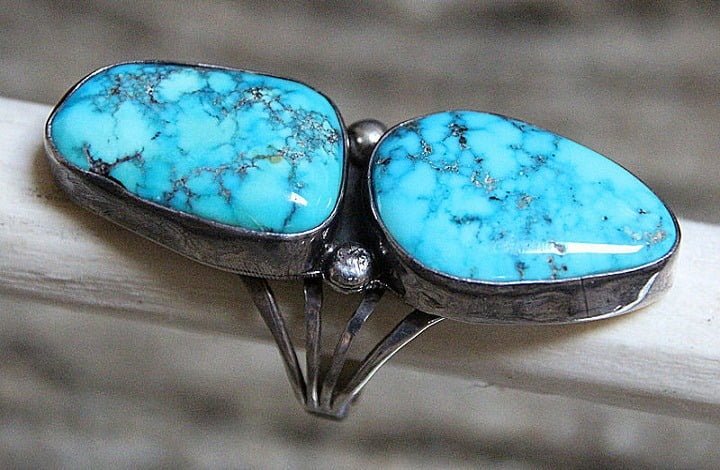Mysteries of Turquoise
Turquoise is a relatively soft gemstone, and can be easily scratched and broken. This porous opaque stone is easily discolored by oil and pigments, it changes it color when it loses some of its water content. Sky blue shade of turquoise is due to the presence of copper and iron gives it greener color. The most valued variety of turquoise is a bright intense blue color, like the color of robin’s egg. Relatively non-porous compact turquoise stones have the best appearances as it can be polished. Pale and chalk like appearance of turquoise is impregnated with oil, paraffin, liquid plastic and glycerine.
Source of Turquoise
This stone can be found in Armenia, Kazakhstan, China, Australia, Tibet, China, Mexico, Brazil, and Egypt. In Iran, where some of the best stones are found, turquoise is the national gem. Some of the variety of turquoise is also found in New Mexico and California.
The turquoise name has been originated from the French phrase “pierre turquoise” which means “Turkish stone” as it was brought to Europe by Venetian merchants who first acquired it in Turkish. It is also considered by some as the love charm. In Russia, it was used in wedding rings.
Turquoise is one of the earliest known stones to be used in jewelry. Pharaohs of Early Egypt wore them. A tomb excavated in 1900 contained the mummified remains of Queen Zer, who ruled in 5500 B.C.; found on her arm were four magnificent turquoise bracelets. In Iran, turquoise was the national gemstone, pinned on thrones, daggers, sword hilts and horse trapping. It was also used as jewelry in ancient Siberia, around the fifth and sixth century B.C. During the Middle Ages, these were popularly used as decoration of vessels and covers for manuscripts. It has also been found in Argentina, Bolivia, Chile, Mexico and Peru.
Turquoise has a rich history in the American southwest. Native Americans have been using this gemstone to create magnificent jewelry and ornamental pieces for the past several thousand years. It was called “Chal-cui-hui-tal”, meaning “the highest and most valued thing in the world”. The blue color in turquoise symbolized the Heavens, and green symbolized the Earth. The stones were used by medicine men to work charms. The Navajo believed that turquoise pieces, thrown into a river while offering a prayer to the rain god, would bring much needed rain.
There are many superstitions associated with the turquoise. In the Third century, it was believed that it is the best protection of owner falling from horse. A change in color also revealed the infidelity of a wife. The turquoise shines when the air is pure and becomes pale when it is dim. According to Persians the reflection of the new moon on a turquoise stone brought good luck and also guards one against the evil.
Buy online Natural Certified Turquoise Gemstone in Wholesale Prices

